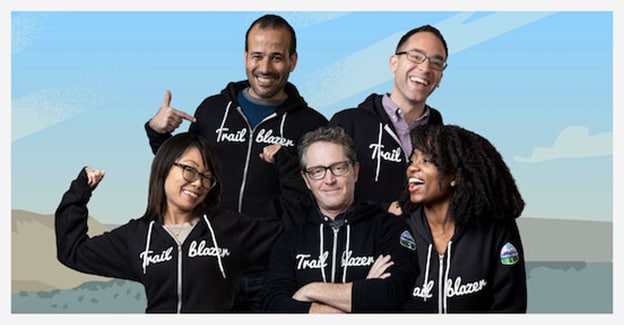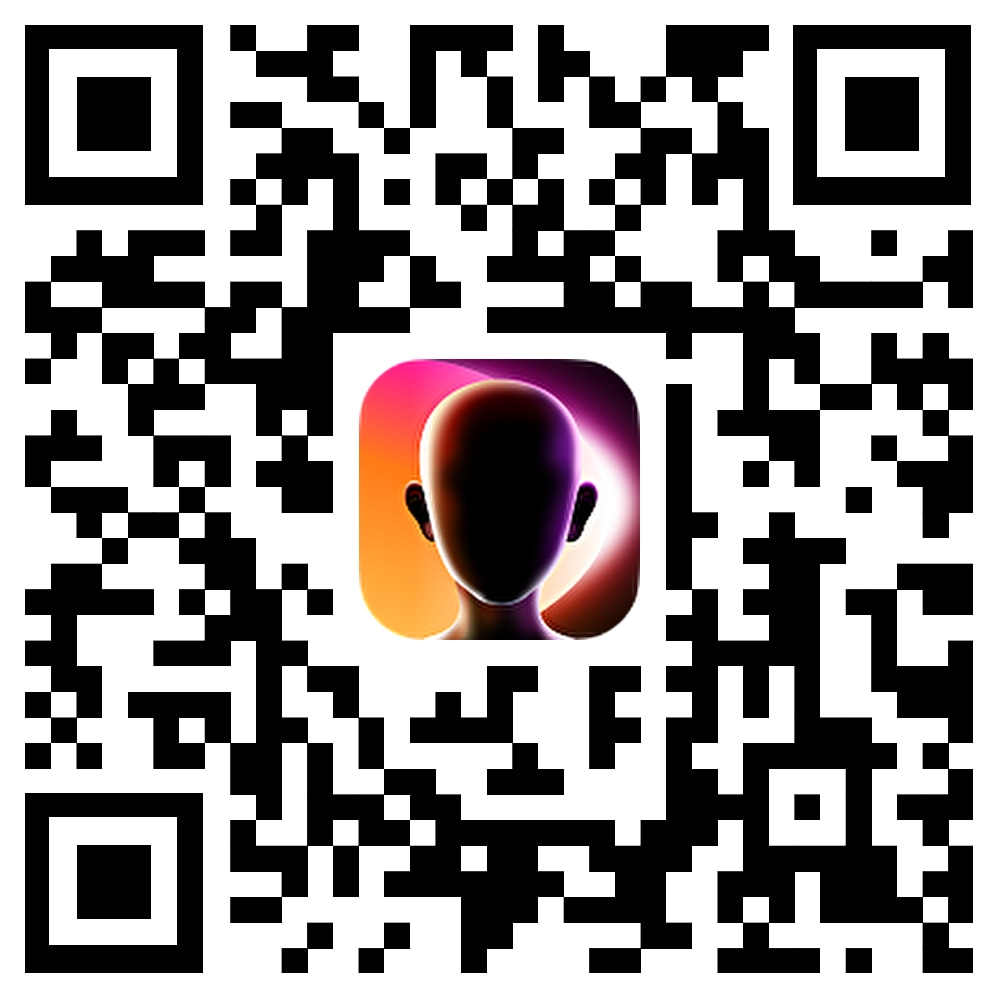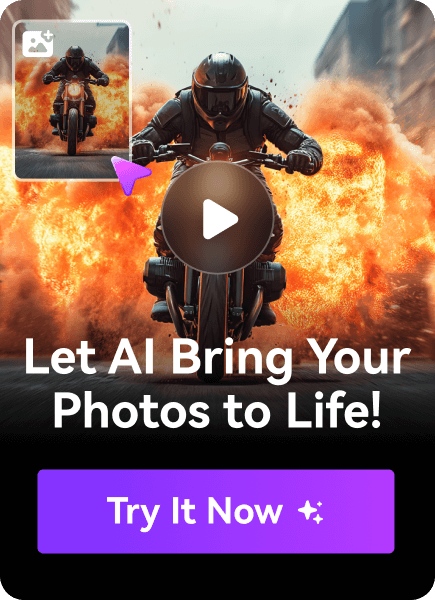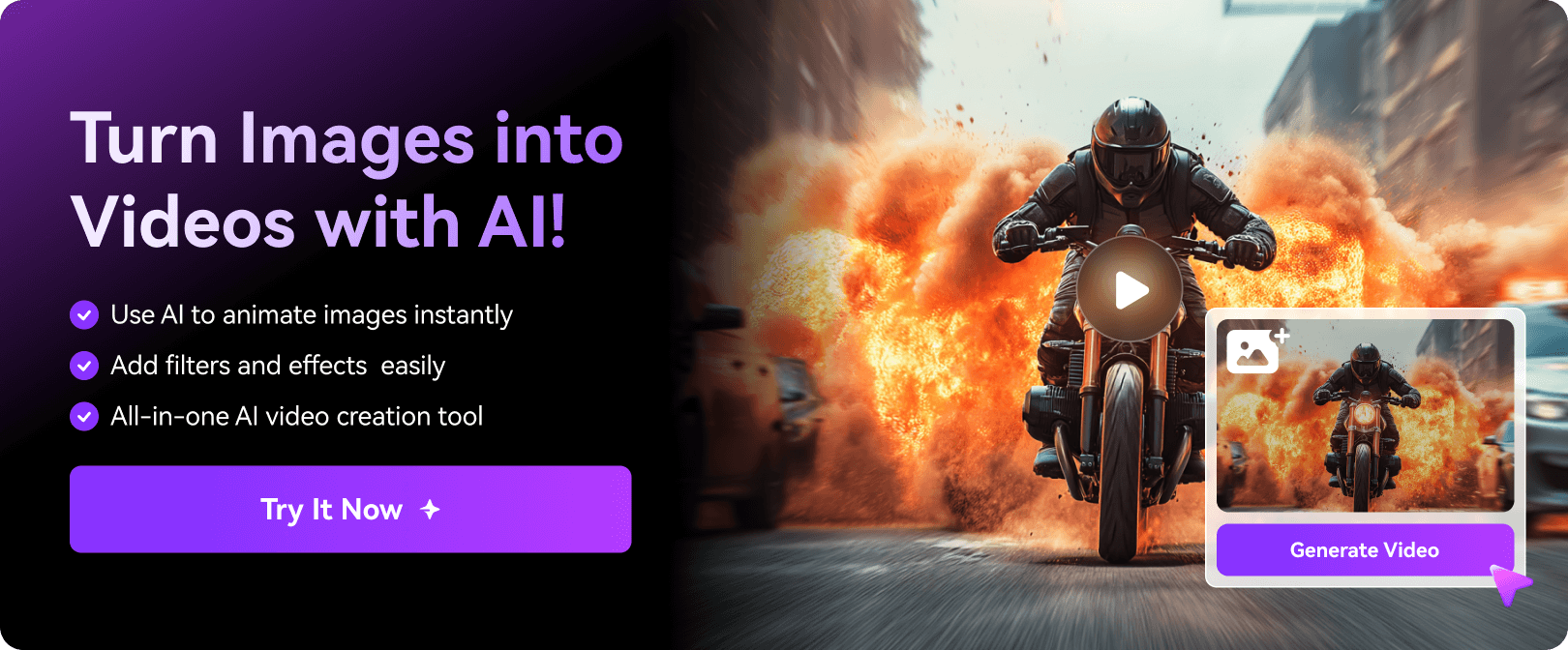B2B marketing plays a critical role in driving business growth by focusing on long-term relationships, targeted communication, and value-driven strategies. Unlike consumer-focused campaigns, B2B campaign examples highlight the importance of solving specific pain points for businesses through tailored solutions. This guide explores successful B2B marketing strategy examples, innovative tools, and actionable steps to help you craft an impactful B2B marketing plan template. Whether you're looking for inspiration or aiming to refine your approach, these insights will set the stage for your next campaign.
In this article
Part 1. What Makes a B2B Marketing Strategy Successful?

Creating a B2B marketing strategy that stands out requires understanding the unique dynamics of business-to-business relationships. Unlike B2C marketing, where emotional appeal often drives decisions, B2B marketing examples emphasize solving problems, building trust, and achieving measurable outcomes. This section explores how tailoring messaging, focusing on ROI, and fostering long-term partnerships can lead to campaign marketing examples that inspire and deliver results.
1. Understanding Your Target Audience and Their Pain Points
- Tailored Messaging: Knowing your audience helps craft personalized messages that address specific challenges. This is a hallmark of the best B2B marketing campaigns that resonate deeply.
- Relevant Content: Solving pain points with actionable content positions your product or service as the ideal solution, a key feature in B2B campaign examples.
- Targeted Campaigns: Using this insight allows focused efforts on platforms where your target audience actively engages, ensuring effective B2B advertising examples.
2. Emphasizing ROI-Driven Campaigns with Clear Metrics
- Measurable Results: Successful B2B marketing strategy examples showcase how tracking lead generation, conversion rates, and traffic proves marketing’s value.
- Data-Driven Decisions: Optimizing campaigns based on analytics enhances outcomes and exemplifies the importance of data in the best B2B ad campaigns.
- Justifying Budget: Strong ROI metrics make it easier to advocate for resources, a critical element in B2B marketing strategy examples.
3. Focus on Creating Long-Term Partnerships Over One-Off Transactions
- Customer Retention: Strong relationships foster loyalty, leading to repeat business and solidifying B2B campaign examples that drive growth.
- Advocacy: Loyal customers act as ambassadors, enhancing your brand image through referrals, a win for B2B ad examples.
- Upselling and Cross-Selling: Deep partnerships unlock opportunities for expanded offerings, a feature in many successful campaign examples.
Part 2. 10 Successful B2B Marketing Strategy Examples
Discover successful B2B marketing campaigns that set the bar for effective strategies. These B2B campaign examples showcase innovative approaches and impactful messaging that drive results across industries.
1. HubSpot’s Inbound Marketing Campaign
HubSpot’s inbound marketing campaign has set the standard for content-driven lead generation. Their focus on providing valuable educational content made them a go-to resource for businesses. HubSpot created blogs, webinars, and eBooks to attract leads, positioning themselves as an authority in the marketing space. By offering valuable content before asking for anything in return, HubSpot built trust and nurtured long-term relationships with customers, driving organic lead generation.

Source: How To Get Started With The Inbound Marketing Campaign In HubSpot
2. Salesforce’s “Trailblazer” Campaign
Salesforce’s “Trailblazer” campaign effectively showcased the power of its solutions through real customer stories. It highlighted how businesses were achieving success using Salesforce. Featuring real success stories from customers, Salesforce emphasized the impact of its solutions through the "Trailblazer" theme. This approach built a sense of community and loyalty, fostering authentic relationships while inspiring new customers to adopt Salesforce’s tools.

Source: Trailblazer Season 2 Trailer | Salesforce
3. IBM’s “Watson” AI Advertising
IBM’s “Watson” campaign demonstrated the cutting-edge capabilities of its AI technology. The interactive ads allowed users to explore Watson’s potential in solving business challenges. Interactive ads gave users a hands-on experience with Watson, showcasing its ability to tackle real-world problems. The campaign catered to a tech-savvy B2B audience and created a personalized experience, positioning IBM as a leader in AI innovation.

Source: IBM Advertising Accelerator with Watson
4. Slack’s “Work. Simplified” Campaign
Slack’s “Work. Simplified” campaign focused on solving key workplace challenges and highlighting the efficiency of its platform. It resonated with businesses seeking better collaboration tools. The campaign emphasized how Slack’s platform could streamline communication and improve team productivity. By addressing common workplace pain points, Slack demonstrated its value and drove adoption among businesses looking to optimize internal communication.

Source: Work, simplified. | Slack
5. LinkedIn’s “In It Together” Campaign
LinkedIn’s “In It Together” campaign focused on celebrating professional success stories. It showcased how the platform helped individuals and companies grow within their industries. The campaign featured real-life success stories, demonstrating LinkedIn’s impact on professional development and career advancement. The focus on community and career success humanized the platform, increasing engagement and trust among its professional audience.

Source: In It Together | LinkedIn
6. Adobe’s “Experience Makers” Campaign
Adobe’s “Experience Makers” campaign targeted businesses by showcasing the power of its creative tools in enhancing business processes. It emphasized personalization and connection with the audience. Adobe delivered a personalized B2B content journey, demonstrating how its tools could transform business processes and creativity. By addressing the specific needs of businesses and focusing on creativity, Adobe strengthened its position as a go-to brand for professionals looking to elevate their work.

7. Microsoft’s “Empowering Us All” Campaign
Microsoft’s “Empowering Us All” campaign focused on the company’s commitment to accessibility and inclusivity, showing how its products could empower users of all abilities. The campaign highlighted Microsoft’s dedication to accessibility, showing how its products support a wide range of users, including those with disabilities. By positioning itself as a socially responsible brand, Microsoft appealed to a broader audience, enhancing its image as an inclusive and innovative tech leader.

Source: Microsoft Commercial : Empowering us all
8. Dropbox’s “For Teams” Campaign
Dropbox’s “For Teams” campaign focused on collaboration and productivity, showcasing how its platform could streamline team workflows. The message was tailored for businesses seeking efficiency. The campaign emphasized Dropbox’s ability to help businesses optimize communication and improve internal collaboration. By focusing on improving team collaboration and addressing common organizational challenges, Dropbox attracted businesses looking for better solutions to streamline their workflows.

Source: Dropbox Paper: A collaborative workspace for creation and coordination | Dropbox Paper | Dropbox
9. Mailchimp’s “Did You Mean Mailchimp?” Campaign
Mailchimp’s quirky and memorable campaign leveraged the common misspellings of its brand name, turning potential confusion into a clever marketing tactic. The campaign featured humorous content that played on variations of the name, helping to stand out in the competitive marketing landscape. By embracing humor and creativity, Mailchimp made its brand more relatable and unforgettable. This playful approach helped differentiate Mailchimp from competitors, resonating with a broad audience and making the brand more approachable.

Source: DID YOU MEAN MAILCHIMP // Cannes Lions 2017
10. SAP’s “Run Simple” Campaign
SAP’s “Run Simple” campaign focused on breaking down the complexity of enterprise resource planning (ERP) solutions. Through storytelling, SAP made its powerful software offerings more accessible to businesses by highlighting the ease and efficiency they brought to operations. The campaign communicated how SAP’s solutions could simplify business processes and increase operational efficiency. By addressing common concerns and simplifying technical jargon, SAP made its products more understandable, attracting businesses looking for straightforward solutions to optimize their workflows.

Source: SAP Run Simple Campaign 2015
Part 3. Crafting a B2B Marketing Plan Template
A well-structured B2B marketing plan template is crucial for any successful campaign. Here are the key components to include:
- Market Research and Audience Segmentation: Understanding your audience is fundamental to a successful B2B campaign. By segmenting your market, you can tailor your messaging to the specific needs of each group, maximizing engagement and conversion.
- Defining Objectives and Key Performance Indicators (KPIs): Establishing clear objectives helps track progress. KPIs like lead generation, website traffic, and conversion rates allow you to measure the effectiveness of your B2B marketing strategy and adjust accordingly.
- Content Marketing Strategies and Campaign Timelines: Create a content strategy that aligns with your goals, ensuring your messaging resonates with your audience. A clear campaign timeline ensures that each piece of content is released at the right time for maximum impact.
- Budget Allocation and Resource Planning: Allocate resources efficiently by defining your marketing budget. Effective planning ensures that your campaigns are well-funded and that each part of your strategy, from content creation to distribution, is properly resourced.
Part 4. Types of B2B Marketing Strategies
When crafting a B2B marketing plan, it’s important to adopt strategies that resonate with your target audience and lead to tangible outcomes. Below are five proven approaches that have proven effective in generating results:

- Account-Based Marketing (ABM): ABM involves creating personalized campaigns for high-value accounts. By customizing your messaging and offers to meet the specific needs of these companies, you can strengthen relationships and improve conversion rates. This strategy is particularly beneficial for B2B ad campaigns targeting key decision-makers.
- Content Marketing: Developing valuable resources like blogs, whitepapers, and case studies positions your brand as an industry leader. By delivering relevant content, you can address your audience's pain points and build trust. This strategy is essential for any B2B campaign marketing aimed at providing education and solutions.
- Event Marketing: Hosting or participating in trade shows, webinars, and conferences provides a unique opportunity for face-to-face engagement with potential clients. These events help increase visibility, build relationships, and create a stronger brand presence in the B2B marketing landscape.
- Social Media Marketing: Using platforms like LinkedIn allows for targeted lead generation and engagement with key professionals. By joining relevant discussions and sharing valuable insights, businesses can build thought leadership and establish their credibility in B2B marketing strategy examples.
- Email Marketing: Tailoring emails to specific segments of your audience helps nurture relationships and drive conversions. With B2B email marketing, you can send personalized messages that keep clients engaged and increase the likelihood of repeat business.
Part 5. B2B Advertising Examples for Inspiration
When looking to improve B2B advertising, it’s important to explore various approaches that resonate with your target audience. Below are two key examples of B2B advertising campaigns that have proven to be effective:
- Best Practices in Digital Advertising:
Digital advertising platforms like Google Ads and LinkedIn Ads offer powerful tools for targeting businesses with precision. With programmatic advertising, you can automate the ad placement process and reach highly specific audiences based on their behaviors, interests, and industry sectors. These methods allow you to optimize ad spend while achieving better engagement rates. - Print and Direct Mail Campaigns:
While digital channels dominate much of B2B marketing today, traditional advertising such as print ads and direct mail campaigns still hold value, especially in niche B2B markets. These methods provide a personal touch, helping brands to stand out and create a lasting impression, particularly for high-end products and services where a physical touchpoint can elevate credibility and trust.
Part 6. How to Leverage Virbo for B2B Marketing Campaigns
Virbo is a powerful AI-driven platform designed to transform your B2B marketing campaigns by converting text and images into professional-quality video ads. It simplifies the process of crafting engaging video content and ensures your campaigns resonate with your target audience. With features like AI Montage Maker for assembling stunning visuals and URL to Video for turning web pages into impactful videos, Virbo provides everything you need to elevate your marketing campaigns.

Start Online For Free
Key Features of Virbo
- Effortless Video Conversion: Quickly transform your blog posts, product pages, or marketing materials into dynamic B2B videos.
- Customizable AI Avatars: Add a personal touch to your videos with virtual influencers that represent your brand and message.
- Platform-Specific Optimization: Easily adjust videos for platforms like LinkedIn, YouTube, or Instagram to maximize engagement.
- Time-Saving Automation: Virbo's AI-driven platform allows you to generate polished videos in a fraction of the time it would take manually.
- Seamless Distribution: Export videos and incorporate them directly into your B2B ad examples, email marketing, or social media campaigns.
3 Steps to Use Virbo for B2B Campaigns
Step1Upload Your Content or Product Details
Start by uploading your blog post, product description, or key materials into Virbo’s Video Ads Maker. The tool will automatically extract text, images, and other essential details to create a strong foundation for your video ad. Ensure the image focuses solely on the product for the best results. You can confirm the generation mode, video duration, and language settings before proceeding to the next step.

Step2Customize and Refine Your Video
Once your materials are uploaded, Virbo’s AI will analyze the content and automatically generate product names, highlights, marketing slogans, and a description of the storyboard. You can review this information and refine it to suit your marketing goals. Using features like AI-generated avatars, voiceovers, and customizable backgrounds, you can enhance the visual appeal of your video. When satisfied, click “Generate Video” to move forward.

Step3Preview, Export, and Launch Your Campaign
After generating the video, you can preview it to ensure it aligns with your expectations. If additional adjustments are required, Virbo’s editor offers options to tweak scenes, add voiceovers, or modify the timeline for precision editing. Once finalized, export the video and deploy it across platforms like LinkedIn, email campaigns, or your website to maximize its impact on your target audience.

Start Online For Free
Conclusion
In reviewing the B2B marketing strategy examples, key insights emphasize the power of personalization, clear messaging, and data-driven decisions. To stay ahead, it’s crucial to leverage tools like Virbo, which can enhance your campaigns with innovative AI-powered video content. By adopting a creative approach and developing a solid B2B marketing plan template, businesses can craft campaigns that not only engage their audience but also deliver measurable results.
FAQs
-
What is a good B2B marketing example?
HubSpot’s inbound marketing is a prime example of using valuable content like blogs and webinars to build trust and educate clients. It's an excellent B2B marketing example for businesses aiming to foster relationships and establish authority in their industry.
-
How can small businesses benefit from B2B campaigns?
Small businesses can thrive in B2B marketing by focusing on personalized, account-based strategies to target key decision-makers. These strategies allow smaller businesses to compete effectively, ensuring cost-effective results and higher engagement.
-
How does Virbo fit into B2B marketing?
Virbo provides scalable, AI-powered video solutions that allow businesses to create professional, personalized videos at scale. It’s a game-changer in B2B advertising examples, enabling brands to craft engaging content efficiently.
-
What are the key differences between B2B and B2C marketing?
B2B marketing often focuses on building long-term relationships and addressing complex business needs, while B2C marketing is more about emotional appeal and immediate purchases. The difference lies in the audience and the buying decision process.
-
How can data-driven decisions improve B2B marketing campaigns?
By using data-driven strategies, businesses can track key metrics such as conversion rates and lead generation to optimize their campaigns. This approach helps refine targeting, resulting in higher engagement and improved ROI for B2B campaign examples.



